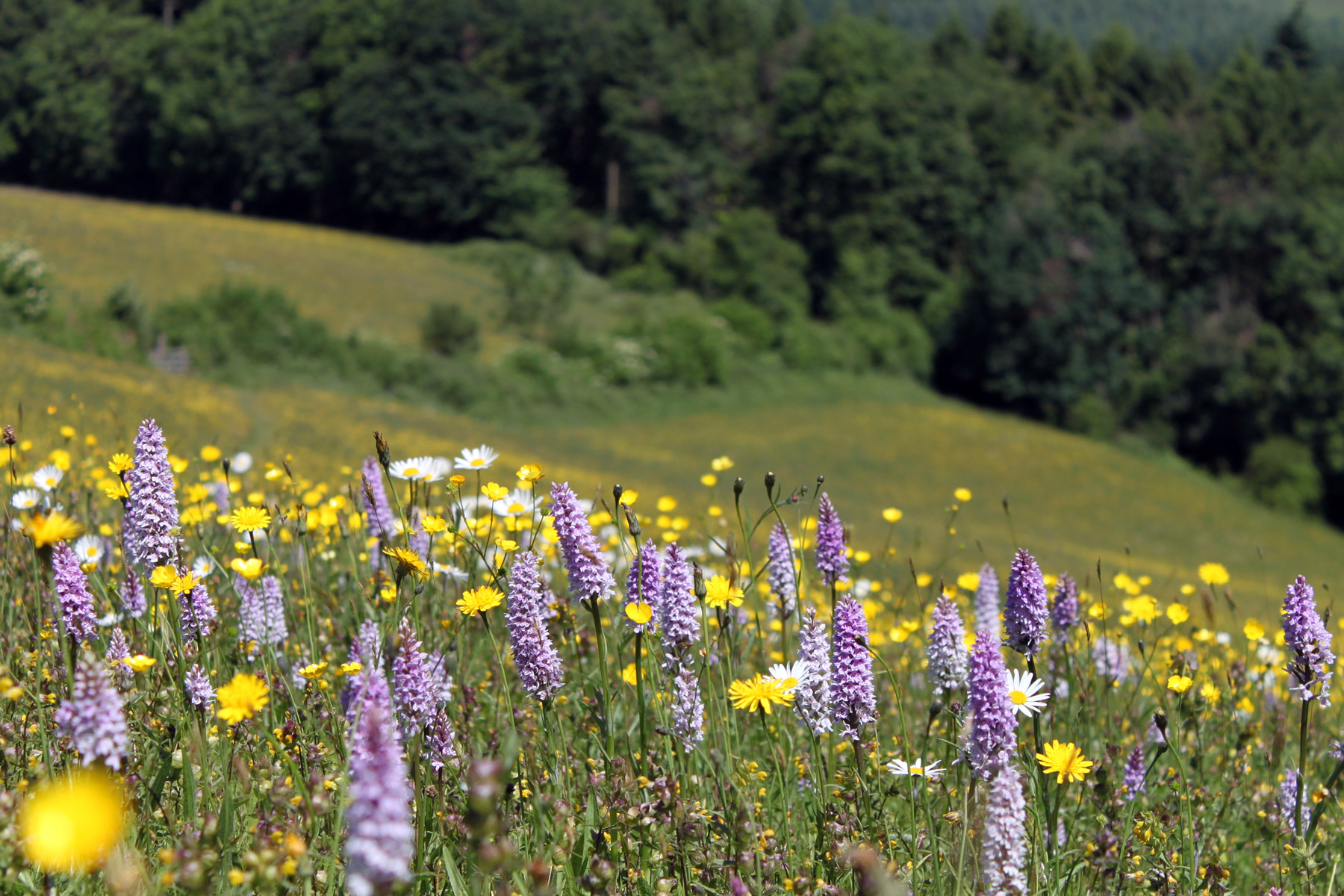Our Zoom talk last Wednesday from Plantlife’s Grassland Advocacy Officer Jo Riggall was attended by 30 species-rich grassland enthusiasts, who all wanted to know more about this precious habitat getting the recognition it deserves. It is available to watch online here and the presentation slides here.
Jo gave a summary of the impressive work that Plantlife has achieved managing, restoring and creating meadows, and campaigning for better protection and recognition of species-rich grassland (SRG).
For those who didn’t already know SRG is defined as ‘open, grassy habitat that is normally maintained by traditional grazing and cutting methods’. Grassland is species-rich if it has more than 15 plant species per square metre, more than 30% cover of wildflowers and sedges (excluding white clover, creeping buttercup and injurious weeds), and less than 10% cover of white clover and perennial rye grass’.
The Gap
After describing the multitude of benefits brought by SRG – wildlife habitats, natural beauty, natural flood defence, and healthier soils to name but a few – Jo went on to highlight the Grassland Gap: the terrible lack of recognition that the habitat receives.
There is no dedicated resource for SRG at DEFRA, as opposed to woodland and lowland peat, and there are 9 policies to protect and promote trees and peat set out in Government Action Plans, focussing for example on better protection through the planning system, and national mapping and monitoring. Species-rich grassland gets no mention…
Jo Rigall went on to highlight the 2023 Plantlife Briefing to call for Grassland Action Plan for England, and went on to look at some of the reasons for this grassland gap.
The Reasons
Incomplete mapping and monitoring, and blurred boundaries between habitat classifications means that important grassland habitats are likely declining and being lost under the radar, and a programme of evidence building is urgently needed.
There is also a need for more evidence to demonstrate the carbon storage potential of SRG grassland. The governments Net Zero Strategy is based upon England’s Tree and Peat Action Plans, and has resultingly lead to lots of support and funding for protection and expansion of these habitats. Once again SRG is missing from the strategy and supporting investments, despite the role grassland have to play as an effective carbon store.
A look at farming income for semi-natural grasslands highlights that farms relying on grazing livestock have some of the lowest farm business incomes, and an array of additional barriers to developing more nature-friendly farming practices have been identified by farmers – eg. Higher perceived risk, lack of funding for transition, and difficulties coordinating and stacking the various incentives.
This led to a look at England’s land management schemes, where there have been some recent improvements in payment rates for creation and management of SRG, but with gaps or no improvements in areas that support farmers in moving towards these systems (see recent HM report for more info). There is also an urgent need for more free, practical and dedicated support for farmers trying to navigate the grassland incentives.
Attendees then joined an interesting Q&A and discussion.
The presentation is available to watch online here and the presentation slides here.
If you have any comments or action points to raise please continue to send them to info@herefordshiremeadows.org.uk
Herefordshire Meadows are grateful to Environment Agency and Herefordshire Wildlife Trust who are supporting us to explore some of the specific research and evidence gaps that are particularly relevant to Herefordshire livestock farmers, in relation to the ecosystem services provided by different grazing strategies and diverse swards.

